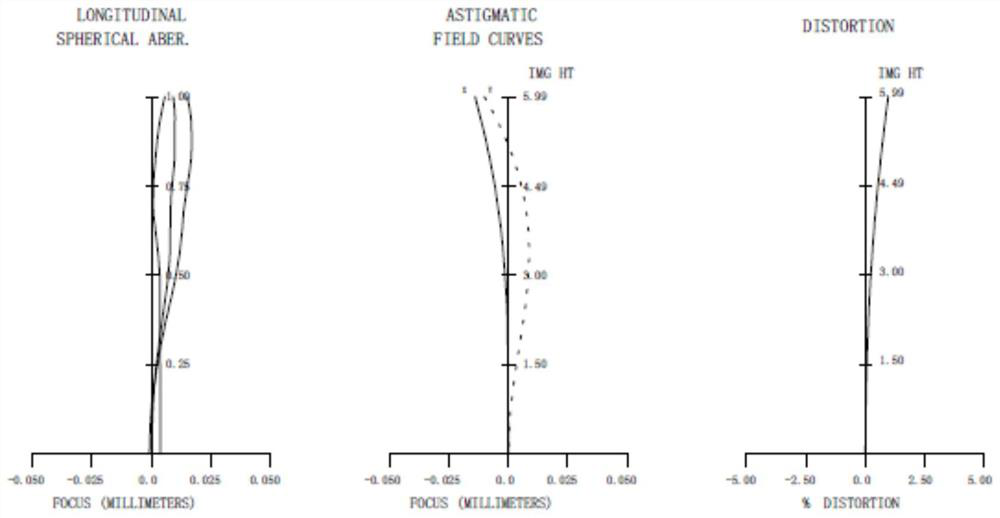Turn-back zoom lens and unmanned aerial vehicle
A zoom lens, fold-back technology, applied in the optical field, can solve the problems of increasing the length of the lens, difficult to install the lens, etc., and achieve the effect of reducing the volume, increasing the zooming ability, and reducing the interference
- Summary
- Abstract
- Description
- Claims
- Application Information
AI Technical Summary
Problems solved by technology
Method used
Image
Examples
Embodiment 1
[0072] like figure 1 and Image 6 As shown, a fold-back zoom lens is composed of a fixed lens group G1 with positive refractive power, a first variable magnification group G2 with negative refractive power, and a negative refractive power group G2 from the object surface side to the image surface side. The focusing lens group G3, the diaphragm STO, the second variable magnification group G4 with positive refractive power, and the reflection component G5 are composed.
[0073] the first variable magnification group G2, the focusing lens group G3 and the second variable magnification group G4 move along the direction of the main optical axis of the fold-back zoom lens;
[0074] The fold-back zoom lens satisfies the following conditional formula:
[0075] TTL<75mm;
[0076] L<55mm;
[0077] Among them, TTL is the total optical length of the fold-back zoom lens, and L is the length of the fold-back zoom lens in the direction of the main optical axis.
[0078] In this embodime...
Embodiment 2
[0118] like Figure 1 to Figure 5 As shown, a fold-back zoom lens is composed of a fixed lens group G1 with positive refractive power, a first variable magnification group G2 with negative refractive power, and a negative refractive power group G2 from the object surface side to the image surface side. The focusing lens group G3, the diaphragm STO, the second variable magnification group G4 with positive refractive power, the reflection component G5, and the auxiliary component G6 are composed.
[0119] The fixed lens group G1 is composed of a first fixed lens a1 with negative refractive power, a second fixed lens a2 with positive refractive power, and a third fixed lens a3 with positive refractive power from the object surface side to the image surface side. A fixed lens a1 and a second fixed lens a2 are cemented.
[0120] The first variable magnification group G2 consists of a first variable magnification lens b1 with negative refractive power, a second variable power lens ...
Embodiment 3
[0155] like Figure 6 to Figure 10 As shown, a fold-back zoom lens is composed of a fixed lens group G1 with positive refractive power, a first variable magnification group G2 with negative refractive power, and a negative refractive power group G2 from the object surface side to the image surface side. The focusing lens group G3, the diaphragm STO, the second variable magnification group G4 with positive refractive power, the reflection component G5, and the auxiliary component G6 are composed.
[0156] The fixed lens group G1 is composed of a first fixed lens a1 with negative refractive power, a second fixed lens a2 with positive refractive power, and a third fixed lens a3 with positive refractive power from the object surface side to the image surface side. A fixed lens a1 and a second fixed lens a2 are cemented.
[0157] The first variable magnification group G2 consists of a first variable magnification lens b1 with negative refractive power, a second variable power lens...
PUM
 Login to View More
Login to View More Abstract
Description
Claims
Application Information
 Login to View More
Login to View More - R&D
- Intellectual Property
- Life Sciences
- Materials
- Tech Scout
- Unparalleled Data Quality
- Higher Quality Content
- 60% Fewer Hallucinations
Browse by: Latest US Patents, China's latest patents, Technical Efficacy Thesaurus, Application Domain, Technology Topic, Popular Technical Reports.
© 2025 PatSnap. All rights reserved.Legal|Privacy policy|Modern Slavery Act Transparency Statement|Sitemap|About US| Contact US: help@patsnap.com



